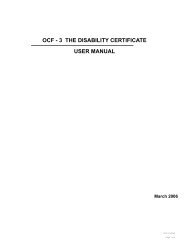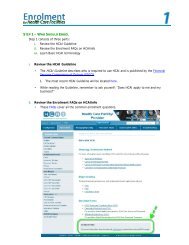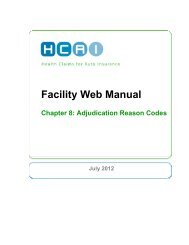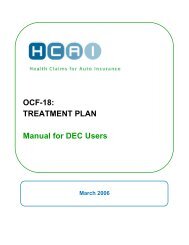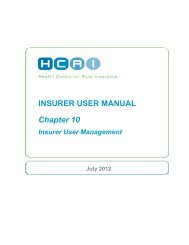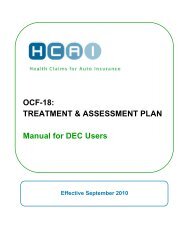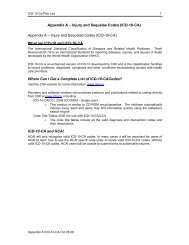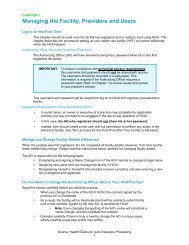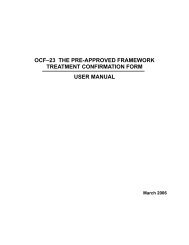Injury and Sequelae Codes (ICD-10-CA) - HCAI
Injury and Sequelae Codes (ICD-10-CA) - HCAI
Injury and Sequelae Codes (ICD-10-CA) - HCAI
Create successful ePaper yourself
Turn your PDF publications into a flip-book with our unique Google optimized e-Paper software.
OCF-23Pre-approved Framework Treatment Confirmation FormBackgroundThe health practitioner who initiates pre-approved treatment for an injury defined in a Pre-approvedFramework (PAF) must fully complete a Pre-approved Framework Treatment Confirmation Form, OCF-23, in order to establish the Initiating Health Practitioner’s right to reimbursement for the delivery of PAFtreatment. The OCF-23 is also the form used to request insurer approval of those treatments that arepermitted to be delivered together with treatment in the PAF, but which also require insurer approval.Purpose:To describe the injuries which are a direct result of the motor vehicle accident.To identify to the insurer the relevant PAF program of care <strong>and</strong> any related pre-approved goods<strong>and</strong> services that will be provided.To request insurer approval of any treatments permitted in the PAF that require pre-approval.To provide speedy confirmation to the provider that there is an insurance policy in existence toenable reimbursement.To identify any prior conditions <strong>and</strong>/or barriers to recovery that could affect the claimant’sresponse to the treatment.This form may not be materially altered; in other words, the document cannot be changed in any manner.If this document is materially altered, it may be considered incomplete <strong>and</strong> the insurer may not accept theform.When is an OCF-23 required?The initiating practitioner must submit the OCF-23 as soon as possible <strong>and</strong> no later than five daysfollowing the practitioner’s first encounter with the claimant. After receipt of the OCF-23, the insurer hasfive days to inform the provider that there is an insurance policy in place to respond to invoices.There will normally be only one OCF-23 per patient. However, exceptions to this can occur, includingwhen:• an ancillary service* is proposed by the initiating practitioner, family physician or insurer, eitherwhen the PAF is initiated or after treatment is underway. The proposal <strong>and</strong> approval of theancillary service are documented through an OCF-23 that is signed by the initiating healthpractitioner or the patient’s physician. Thus, if the insurer wishes to initiate an ancillary service,the insurer shall do so by contacting either the initiating practitioner or the patient's familyphysician, who will complete the OCF-23.• the initiating practitioner determines, after treatment is underway, that the patient needs a good(e.g. equipment) to support treatment or that a supplementary condition exists which requires theSupplementary Condition service.• the patient decides to change practitioners while there are resources remaining in the PAF, inwhich case the patient <strong>and</strong> second practitioner must inform the insurer through submission of anew OCF-23.• the initiating provider of a WAD I PAF determines that the patient is more appropriately treated inthe WAD II PAF. In this case, the total cost of PAF treatment must not exceed the cost of theWAD II PAF <strong>and</strong> must be documented in a new OCF-23.* Refer to the PAF Guidelines for more information. An Activities of Normal Life Intervention (ANLI) isused to identify <strong>and</strong> evaluate areas of functional difficulty or barriers to recovery <strong>and</strong> to implementstrategies for recovery.3





